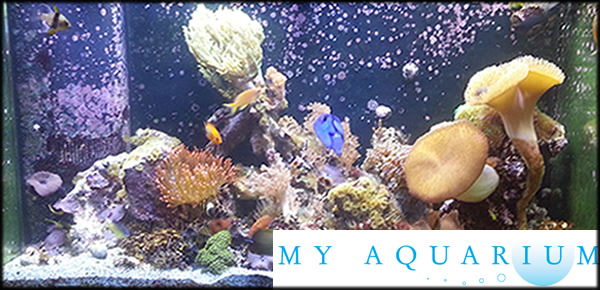Blennies (Blenniidae)
Bleenie Family Characteristics:
Blennies make a cheerful addition to the home aquarium but many should be kept in a species tank rather than in a community collection. They naturally frequent inshore waters, hiding in any handy crevice, not always bothering to follow the tide out ot sea. Provide suitable living quarters in the aquarium by arranging rockwork to form plenty of hiding crevices and observation posts.
The blennies dorsal fin is long and there are hairy, bristle like growths above the high set eyes. Their skin is slimy, hence the alternate name of slimefishes.
Male blennies tend to be larger and more colorful than females. During breeding, the male may undergo changes in color during both the pre and post spawning periods.
Diet And Feeding:
Blennies are completely omnivorous, eating everything from algae to small fishes and bits of large ones! They will even take dried foods with apparent relish.
Aquarium Behavior:
Some blennies are very territorial and aggressive to any other fishes; Ophioblennius is a typical case that should not be kept with any fish less than twice its size.
List Of Popular Aquarium Blennies:
- False Cleanerfish, Sabre Toothed Blenny, Cleaner Mimic (Aspidontus taeniatus)
- Bicolor Blenny (Ecsenius bicolor)
- Midas Blenny (Ecsenius midas)
- Redlip Blenny (Ophioblennius atlanticus)
- Striped Slimefish, Scooter Blenny (Petroscirtes temmincki)
- Banded Blenny, Sailfin Algae Blenny (Salarius fasciatus)
- Barnacle Blenny (Acanthemblemaria macrospilus)
- Black Combtooth Blenny (Ecsenius namiyei)
- Black Sailfin Blenny (Atrosalarias fuscus)
- Canary Blenny (Meiacanthus oualanensis)
- Ember Blenny (Cirripectes stigmaticus)
- Harptail Blenny (Meiacanthus mossambicus)
- Linear Blenny (Ecsenius lineatus)
- One Spot Blenny (Crossosalarias macrospilus)
- Orangethroat Pike Blenny (Chaenopsis alepidota)
- Starry Blenny (Salarias ramosus)
- Striped Blenny (Meiacanthus grammistes)
- Tail Spot Blenny (Ecsenius stigmatura)
- White Blenny (Meiacanthus smithii)


